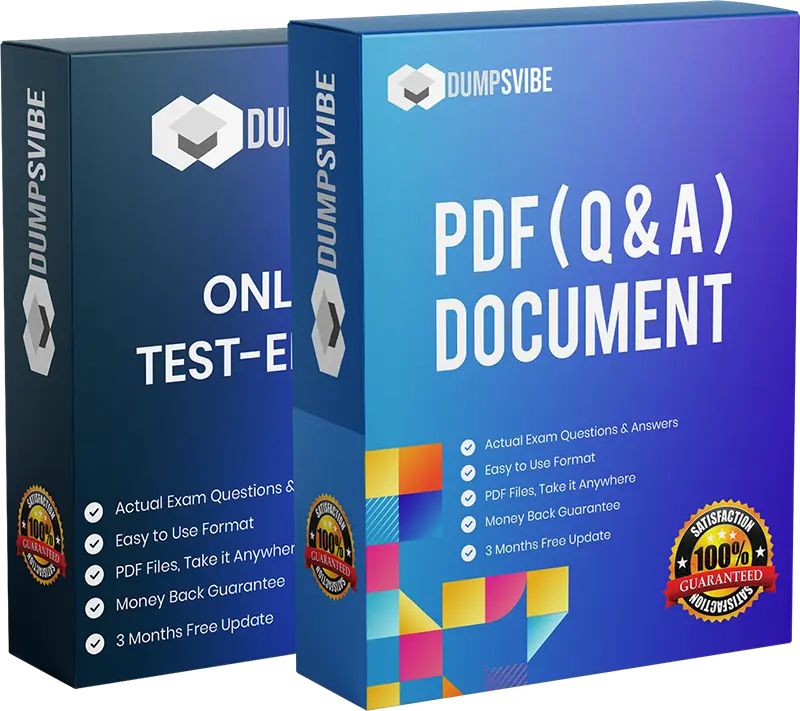
Microsoft AZ-220 Exam Dumps
Microsoft Azure IoT Developer
Last Week AZ-220 Exam Results
Customers Passed Microsoft AZ-220 Exam
Average Score In Real AZ-220 Exam
Questions came from our AZ-220 dumps.
Authentic Exam Dumps for AZ-220
Master Your Preparation for the Microsoft AZ-220
Our team of highly skilled and experienced professionals is dedicated to providing updated and accurate study material in PDF format for our valued customers. Our material accumulators ensure that our students successfully achieve more than 90% marks in the Microsoft AZ-220 exam. We understand the importance of keeping the material up-to-date, and any changes in the Microsoft AZ-220 dumps file are communicated promptly to our students. We value your time and investment and make every effort to provide you with the best resources available. Rest assured, there is no room for error as we strive for excellence.
Friendly Support Available 24/7:
Our team is available round the clock to provide guidance and support. If you have questions or need assistance, feel free to reach out to us anytime. We are here to ensure you have access to the complete study material required to pass your Microsoft AZ-220 with remarkable marks.
Recognized Dumps for Microsoft AZ-220:
At Dumpsvibe, our experts are committed to delivering accurate and reliable material for your Microsoft AZ-220 exam. To achieve sweeping success, it is essential to enroll in our comprehensive preparation program. We provide genuine material that will help you excel with distinction. Our provided material mirrors the exam questions and answers, enabling you to prepare effectively. Our dedicated team works tirelessly to ensure our customers can pass their exams on their first attempt without any trouble.
Microsoft AZ-220 Questions:
We offer our students real exam questions with a 100% passing guarantee, allowing them to successfully pass their Microsoft AZ-220 exam on their first try. Experienced experts have meticulously crafted our Microsoft AZ-220 dumps PDF to match the model of the real exam question answers you will encounter during your certification journey.
Related Exams
Question # 1You have an Azure IoT hub that has a hostname of contoso-hub.azure-devices.net and an MCU-based IoT device named Device1. Device1 does NOT support Azure IoT SDKs. You plan to connect Device1 to the IoT hub by using the Message Queuing Telemetry Transport (MQTT) protocol and to authenticate by using X.509 certificates. You need to ensure that Device1 can authenticate to the IoT hub. What should you do?
A. Create an Azure key vault and enable the encryption of data at rest for the IoT hub by
using a customermanaged key.
B. Enable a hardware security module (HSM) on Device1.
C. From the Azure portal, create an IoT Hub Device Provisioning Service (DPS) instance and add a certificate enrollment for Device1.
D. Add the DigiCert Baltimore Root Certificate to Device1.
Question # 2
You enable Azure Security Center for IoT. You need to onboard a device to Azure Security Center. What should you do?
A. Add the azureiotsecurity module identity to the Azure IoT Hub device identity.
B. Open incoming TCP port 8883 on the device.
C. Modify the connection string of the device.
D. Install an X.509 certificate on the hardware security module (HSM) of the device.
Question # 3
Note: This question is part of a series of questions that present the same scenario. Each question in the series contains a unique solution that might meet the stated goals. Some question sets might have more than one correct solution, while others might not have a correct solution. After you answer a question in this question, you will NOT be able to return to it. As a result, these questions will not appear in the review screen. You have an Azure IoT solution that includes an Azure IoT hub, a Device Provisioning Service instance, and 1,000 connected IoT devices. All the IoT devices are provisioned automatically by using one enrollment group. You need to temporarily disable the IoT devices from the connecting to the IoT hub. Solution: You delete the enrollment group from the Device Provisioning Service. Does the solution meet the goal?
A. Yes
B. No
Question # 4
You have an Azure IoT solution that includes a standard tier Azure IoT hub and an IoT device. The device sends one 100-KB device-to-cloud message every hour. You need to calculate the total daily message consumption of the device. What is the total daily message consumption of the device?
A. 24
B. 600
C. 2,400
D. 4,800
Question # 5
Note: This question is part of a series of questions that present the same scenario. Each question in the series contains a unique solution that might meet the stated goals. Some question sets might have more than one correct solution, while others might not have a correct solution. After you answer a question in this section, you will NOT be able to return to it. As a result, these questions will not appear in the review screen. You have an Azure IoT solution that includes an Azure IoT hub and an Azure IoT Edge device. You plan to deploy 10 Bluetooth sensors. The sensors do not support MQTT, AMQP, or HTTPS. You need to ensure that all the sensors appear in the IoT hub as a single device. Solution: You configure the IoT Edge device as an IoT Edge identity translation gateway. You configure the sensors to connect to the device. Does this meet the goal?
A. Yes
B. No




